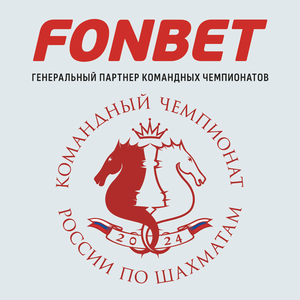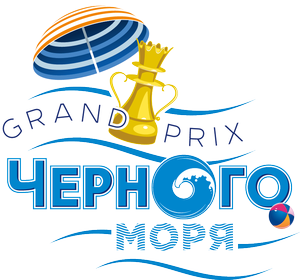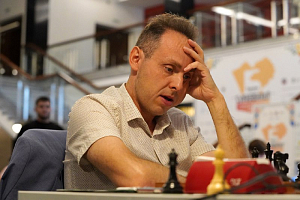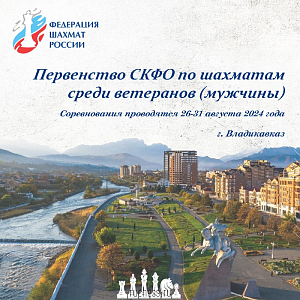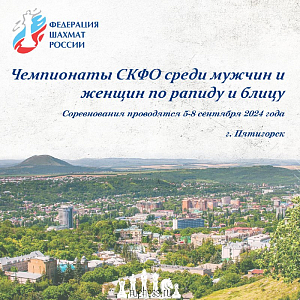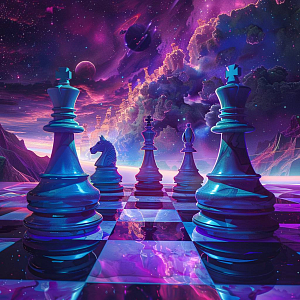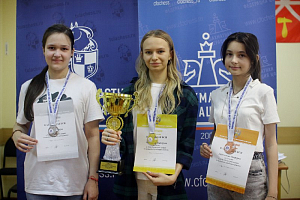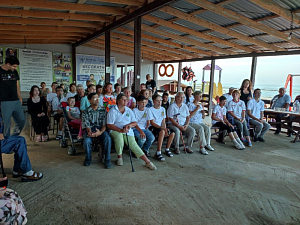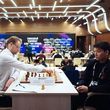Nemesis of Qualification Knockouts
When your Final is a Semifinal. Review by Dmitry Kryakvin
Suitability of this or that format in terms of bringing the fairest results has been subject to much debates among chess fans. Is it a Swiss, a round-robin, or a knockout? Chess professionals, on the other hand, are rather concerned with what is the most challenging and exhausting for them. Here you are making a mess of the tournament to the extent that none would deign to make a draw with you even. However, the Swiss or round-robin will find you creeping painfully towards the finish line, while the knockout will send you packing your bags in no time at all. It is time to take rest and gather strength for new challenges to come.
On the other hand, what mental anguish it is to make it almost to the top in a knockout only to run into this no time at all. Did you see facial expressions of Levon Aronian and Nikita Vitiugov after their defeats in the quarterfinals in Khanty-Mansiysk? There is nothing more tragic than that!
Besides, knockouts tend to remember the winners only. Even those who go down in the final matches will find themselves forgotten more often than not. Changes in the qualification system of the FIDE world championships, which have become World Cups since 2005, are now about two or three top-finishing players as they are entitled to qualify into the Candidates Tournament. It is going down in the semifinal that becomes a player's tragedy nowadays. As they liked to joke about strong masters back in Soviet times who could never make it into the stellar championship of the Soviet Union: “Your final is a semifinal!” However, first things first.
Thus, it is the year 1997. Tired of failures to organize a unifying match between Kasparov and Karpov, FIDE President Kirsan Ilyumzhinov, on the advice of Alexander Roshal, editor-in-chief of 64 chess magazine, decided to adopt the court tennis format and hold a knockout championship that would allow making money to tens, if not hundreds, of GMs. Kasparov indignantly refused from participating, motivating it as leading to the champion title's devaluation, while Karpov was eventually allowed directly into the final! It provoked the indignation of many elite grandmasters, Vladimir Kramnik being one of them.
One way or another, the Groningen knockout championship was the first of its kind, the final of which was made into by Viswanathan Anand and Michael Adams (which, given Karpov's privileges, turned into a semi-final). It was an extremely tough battle with all the games ending in a draw, and in the “Armageddon” the Englishman quickly got an excellent position as Black. Adams managed to develop dangerous initiative, but hesitated at a decisive moment, allowing Anand trading the queens off so that the Indian GM's potent passed pawn brought him a full point.
Having gone this far in 1997 in Groningen after a month’s marathon, an exhausted Anand was to meet a legendary 12the world champion Karpov as soon as January 1998. The classical part of the match saw a fierce battle and ended in a draw 3:3 (+2-2 = 2), and the winner was to be determined in a tie-break. Here Anand's advantage seemed indisputable as he had always been considered a brilliant master of the reduced time control format. However, this is when a tragedy was in store for the Madras tiger, comparable in emotions to that happening in the “death game” to Michael Adams shortly before.
Karpov – Anand
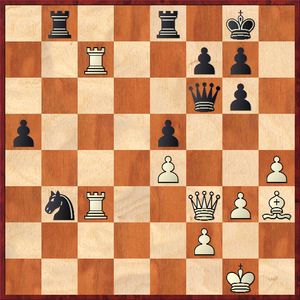
Black is up a healthy pawn and a huge preponderance in time so that the position arising after 40...Nd4! 41.Qxf6 gxf6 would be an uphill battle even for such a unique defender as Karpov. Despite having burned much of his clock, Anand committed an error.
40...a4? 41.Qxf6 gxf6 42.Bd7 Nd4?!
42...Re7 43.Bxa4 Rxc7 44.Rxc7 Nd4 leads to a draw, but the Indian GM loses control over the game in the heat of action.
43.Bxe8 Ne2+ 44.Kg2 Nxc3 45.Bxf7+ Kf8
Bad is 45...Kg7? 46.Bd5+ Kf8 47.Rxc3+-.
46.Bxg6, and the ex-world champion delivered quite a technical performance in converting his edge over his younger opponent.
Anand's second, Elizbar Ubilava, recalled his desperate attempts to put Vishy together for the second game, but his trainee could never cope with the terrible aftermath... As a result, the second game also ended in Karpov's favor, and Anand had to put off his ambitions until better days.
The 1999 World Championship was staged in Las-Vegas. The American dream city has seen more terrible tragedies than those related to chess. But how does a lost chess game stack up against a whole fortune squandered in a casino? The undoubted favorites were kicked out in droves at an early stage, at which point Kasparov added fuel to the fire of this otherwise highly nervous situation by publicly dubbing the semi-finalists “tourists”. It triggered a big scandal, and Sergei Movsesian came back with a harsh answer. However, the final match between Alexander Khalifman and Vladimir Akopian was a very high-quality contest without a frequent trade of errors so characteristic of knockouts and the games ending logically. The matchup ended 3.5:2.5 in the Russian player's favor.
The following knockout taking place at his homeland gave a new opportunity to Anand, which he didn’t fail to seize. In the final (the knockout took place in Delhi in 2000, and the final match in Tehran) Vishy was opposed by Alexei Shirov, who had recently defeated Vladimir Kramnik in a classical match. However, Kasparov would nonetheless choose to fight Shirov’s defeated opponent later on...
Shirov came up with brilliant performance worthy of success, but was knocked out by a tragic blow happening in game two (the first had ended in a draw).
Anand – Shirov
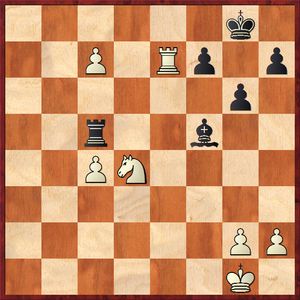
28...Kf8?
28...Kg7! 29.Nxf5+ gxf5 was an easy draw as the king helps deal with the enemy pawns.
29.Nxf5 gxf5 30.Rd7! Kg7 31.Rd4, and, having managed to keep the c4-pawn alive, Anand sent his king to assist it and tipped the scales in his favor.
Now the GM representing Spain needed to bounce back, but Anand was skillful in taking advantage of his superior position and eventually ended up scoring a landslide victory in this final match.
The 2001 Championship was hosted by the Kremlin Palace of Congresses of Moscow. If the previous time the champion Khalifman lost to the future champion Anand in the course of a dramatic quarterfinal, this time the chess king from India got in trouble with Vassily Ivanchuk in the semifinals. In the final, Vassily Ivanchuk was faced off with Ruslan Ponomariov after the Ukrainian child prodigy had knocked out all Russian grandmasters who had come his way.
The final match began with a confident victory by Ponomariov, but then Ivanchuk seized the initiative, was on the offensive in many games and close to equalizing the score.
Ponomariov – Ivanchuk
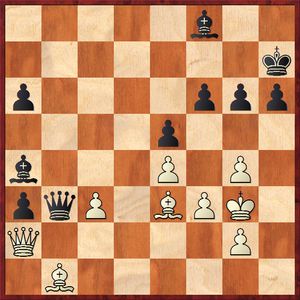
White is down a pawn and completely outplayed, and the black forces are dominating. This said, Ivanchuk’s remote passed pawn should have sealed the fate of the game. However, multiple errors in yet another terrible time pressure of the eldest of the two Ukrainians resulted in Ponomarev's taking the game and the match!
Seventeen years have passed since that memorable finale of 2002, but Vassily Mikhailovich’s fans have never stopped recalling that game...
Alas, there arose problems with the planned knockout of 2003 as FIDE was struggling to find a sponsor for a long time, and the tournament finally took place only in 2004. The knockout venue was in Libya, where grandmasters were hospitably met by Colonel Gaddafi. The Jewish players were not welcome, however. As a result, they missed the Tripoli championship, which has gone down in history as the weakest in terms of lineup. Notwithstanding this, quite a lot of strong chess players did set foot on the African soil, Rustam Kasimdzhanov and Michael Adams making into the final. The classical part was a close contest, and the finish line saw the Uzbek grandmaster an inch from disaster for no reason at all.
Kasimdzhanov – Adams
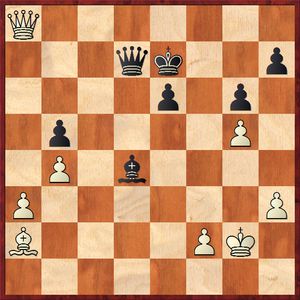
White has decent winning chances after 41.Bb3, intending a tricky 41…Bxf2 42.Qh8!, but Kasimdzhanov nearly walked into a deadly trap.
41.Qg8?? Qc6+ 42.Kg3 Bxf2+?
“Out of sheer joy” Black goes for a draw, whereas a victory was to be secured by 42...Qe4! 43.Qxh7+ Kf8 44.Qh6+ Ke8 45.f3 Qe5+ 46.Kg4 (or 46.Kg2 Qe2+ 47.Kg3 Be5+ 48.f4 Qe3+ 49.Kg2 Qe4+; 46.f4 Qe3+ 47.Kg4 Qg1+ 48.Kf3 Qf2+ checkmating soon after in all lines) 46...Qf5+ 47.Kg3 Be5+ 48.Kf2 Qc2+ 49.Ke3 Bc3 50.f4 Qd2+ 51.Kf3 Qd3+ 52.Kg2 Qe4+ 53.Kg3 Be1+.
43.Kxf2 Qc2+ 44.Ke3 Draw.
In game one of the tie-break, the Englishman went down in a position featuring a huge advantage and a similar potent passer that had helped Anand back in their "death game” in Groningen. Adams never managed to come back from that defeat. What an incredible drama for Adams, who was so close to the champion's title on two occasions.
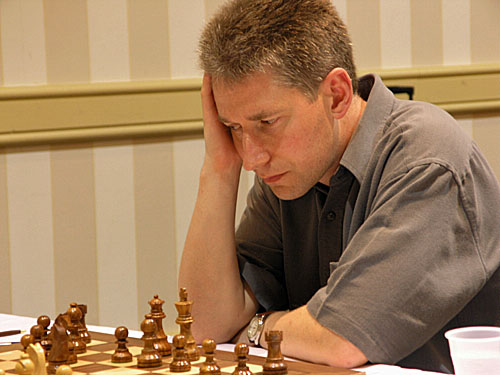
Soon, the Prague agreement was at last put into action and a tournament for the world title was organized, triumphing in which was Veselin Topalov, whereas Vladimir Kramnik succeeded in defending the classical chess champion title in a duel with Peter Leko. The scandalous unification match gave the world a single chess king as Kramnik proved stronger at the tie-break. Therefore, subsequent knockouts were only qualifying in nature, and the champion's title was no longer at stake in any of them.
Meanwhile, a snowy Khanty-Mansiysk turned into a long-standing venue for many a World Cup that followed. The 2005 edition, however, went off in a rather sparing manner as there were being determined the participants of the Candidates matches that had nothing in terms of semifinal-final dramas. Qualifying into it were the winner Levon Aronian, a finalist Ruslan Ponomariov, the semi-finalists Alexander Grischuk and Etienne Bacrot, the quarter-finalists Evgeny Bareev, Mikhail Gurevich, Sergey Rublevsky and Boris Gelfand. An additional contest was organized for those who made into the final 16 – Magnus Carlsen, Vladimir Malakhov and Gata Kamsky being among the lucky ones. Added to the eleven Ugra nominees were Alexei Shirov, Michael Adams, Judith Polgar, Rustam Kasimdzhanov, and Peter Leko.
However, the knockout edition taking place two years later saw the participants fiercely battling it out to the last bullet! The winner Gata Kamsky was entitled to the final match against Veselin Topalov (which became clear after a number of backstage intrigues that nearly lead FIDE to launch a lawsuit against the Bulgarian GM's manager Silvio Danailov), whereas the finalist Alexei Shirov was not entitled to any such rights. By the way, participating in those semifinals were the young Magnus Carlsen and Sergey Karjakin, who seven years later were destined to face each other in a world championship match.
In the final, Gata Kamsky defeated Shirov 2.5:1.5 after pressing his golden opportunity home and his opponent missing on it in a similar situation.
Shirov – Kamsky
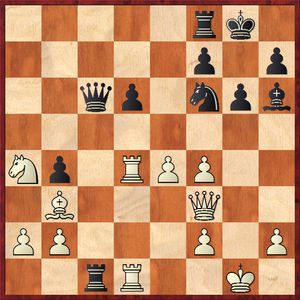
30.Rxb4?
An effective-looking 30.Nc3! Rxd1+ 31.Nxd1 would have given White decent chances to convert an extra pawn, while the text provides Kamsky with potent counterplay.
30...Rxd1+ 31.Bxd1 Qc1! 32.e5 dxe5 33.fxe5 Qg5+ 34.Kf1 Qxe5, and the complex fight fizzled out into a draw.
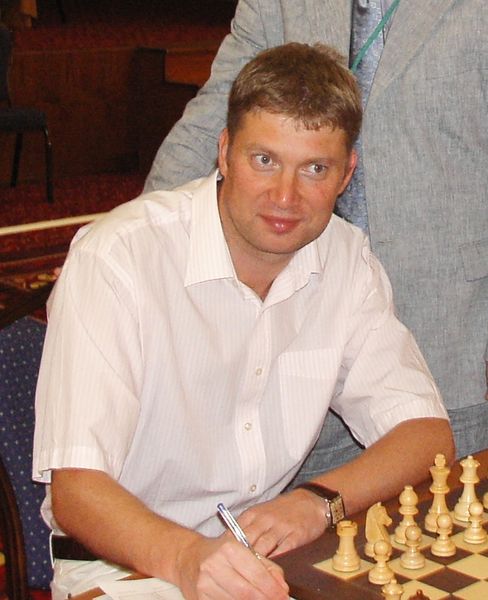
The 2009 World Cup was being crowned by an epic battle between Boris Gelfand and Ruslan Ponomariov. The Israeli GM was the first to take the lead, but a strong-willed Ukrainian came back to equalize the score. Gelfand won again, and so did Ponomariov. Gelfand took the lead for the third time, at which point Ponomarev succumbed to the pressure.
Ponomariov – Gelfand
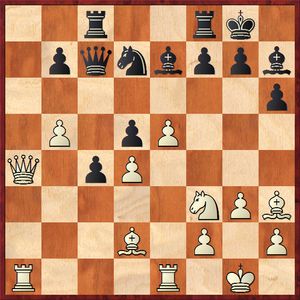
Good advice is beyond price for Black after 23.Ba5 b6 24.Bc3, but White blundered instead with
23.b6? and after Nxb6 24.Qb5 Qc6!, it was all about Boris Gelfand.
The World Cup winner went on to convincingly win the Candidates and was close to dethroning Vishy Anand. The final match loser did not play in Kazan even after Magnus Carlsen's refusal...
Injustice to the rights of the one who had lost the final match was obvious to everyone. Fortunately, stepping into the process before long were representatives of the Association of Chess Professionals. Its head Emil Sutovsky was among developers of a coherent qualification system, in which two finalists and a winner of the third-place matchup were entitled to qualify into the Candidates tournament (by the way, in 2019 the match for the “bronze” is back the knockout cycle).
Celebrating success in the 2011 World Cup were the winner Peter Svidler and the finalist Alexander Grischuk, who had defeated Ruslan Ponomarev and Vassily Ivanchuk in the semi-finals respectively. Ivanchuk was fully entitled to qualify into the final, but blundered a minor and then a rook in a winning position in a tie-breaker. However, Ivanchuk’s performance in the consolation match was extremely strong, leaving Ponomariov outside the historical Candidates Tournament in London.
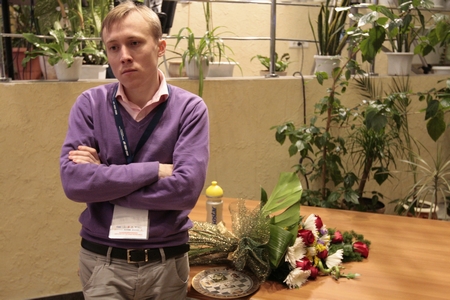
After many competitions held in Khanty-Mansiysk, the 2013 World Cup was accommodated by the Norwegian Tromsø. Now that the FIDE Grand Prix series was underway, the Cup participant had only two tickets to fight for to qualify into the Candidates. The final had two Russians pitted against each other: Vladimir Kramnik and Dmitry Andreikin. The ex-world champion was in excellent shape and managed to defeat his tenacious opponent.
Suffering at the hands of these two in the semifinals were Maxime Vachier-Lagrave and Evgeny Tomashevsky. While Kramnik’s superiority over the French player was quite obvious, Andreikin vs. Tomashevsky was a tight game to be decided by the first blunder.
Andreikin - Tomashevsky
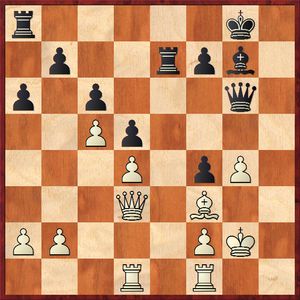
Black is slightly better after 26...Qxd3 27.Rxd3 Kh7, but a draw seems the most likely outcome. There followed, however
26...a5 27.Rh1 Rae8 28.Rh5 Re1? 29.Rxe1 Rxe1 30.Qd2
Andreikin snapped the f4-pawn and went on to convert it after a series of mutual errors.
Later, Tomashevsky was very close to qualifying into the Candidates via the Grand Prix series, but luck again sided with the Saratov grandmaster's opponent.
The 2015 battle was staged in a sunny Baku, and making into the Candidates again required making into the top two. Those two were Sergey Karjakin and Peter Svidler, and their thrilling matchup ended in a victory of a future runner-up. However, no lesser tension was in the semifinals, in which Svidler defeated Anish Giri, and Karjakin scored a virtually miraculous victory over Pavel Eljanov.
Having saved a difficult ending down a pawn in a classical game, and having come back in a tie-breaker game that followed, Karjakin again found himself at the brink of disaster.
Eljanov – Karjakin
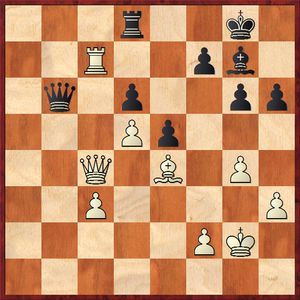
White's superiority in an opposite-colored bishop ending was highlighted by 42.Qc6! Qb8 (42...Qxc6 43.dxc6 d5 44.Rb7! Bf8 45.Bc2 Rc8 46.Ba4 is also an uphill battle) 43.Rb7 Qc8 44.c4!, but the tables turned within a span of just a couple of moves!
42.h4? Bf6! 43.h5? Bh4, and Karjakin went on to grind out a vital victory after pocketing the f2-pawn.
To Eljanov's credit, even a blow of this magnitude didn't stop him from outplaying Karjakin in the following game, but Caissa again sided with the future runner-up as in the winning opposite-colored bishop ending Pavel overlooked a threefold repetition. Going over Karjakin’s path to the New York match makes you realize that fate favored him more than once.
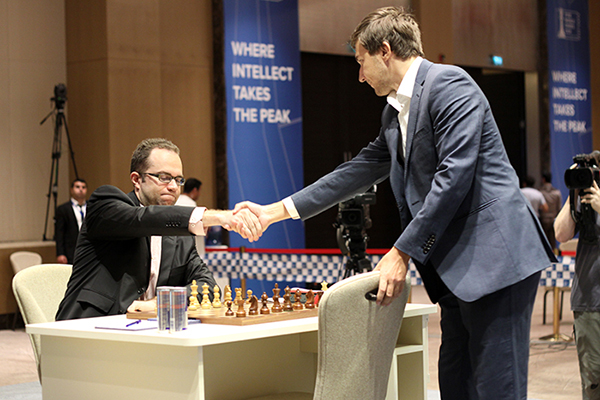
The 2017 World Cup in Tbilisi mainly brings back the GM Anton Kovalyov's shorts, as well as a timid and intelligent reaction to Anton’s wearing them from the tournament director Zurab Azmaiparashvili. Nevertheless, the knockout in Georgia was exciting from the athletic point of view as taking part in it was one world champion Magnus Carlsen. The semifinals had Ding Liren and Levon Aronian pitted against Wesley So and Maxime Vachier-Lagrave respectively. The Chinese GM’s success in the decisive qualifying battle looked well-deserved, and in the second matchup Lady Luck resolutely sided with Levon (this time turning her back on Maxime).
Vachier-Lagrave came forward in a tie-break, and Aronian bounced back; then the Frenchman gave back the extra pawn in the queens ending with excellent winning prospects, sending the match into the stage of Armageddon.
Aronian – Vachier-Lagrave
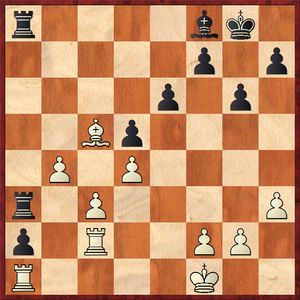
The Armenian GM’s fans were lamenting here about the a2-pawn making Black absolutely rock-solid. Thus, in the case of 34...Bxc5 35.dxc5 Kf8 36.Ke1 Ke7 37.Kd2 Kd7 it is White's turn to come up with a precise play, but a highly tense situation saw Vachier-Lagrave lash out with 34...e5, followed by ditching yet another pawn later on. Aronian's passed pawns were the first to queen in a mind-boggling race taking place at the board.
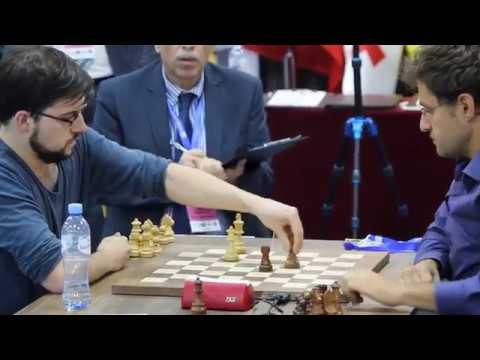
Levon managed to build upon this wonderful victory by defeating Dean Liren in the final, whereas Maxim was in for another setback from Dmitry Jakovenko and did not make it into the Candidates. In the current cycle, Vachier-Lagrave failed in the semifinal again, but the established formula enables him to fight for the third, which might land him into the Candidates if circumstances go his way.
Chess history is in a permanent rush. It is not long ago that Carlsen was called by everyone as "kid", and now the youngsters look up to him as a mighty warrior of the older generation. We have witnessed a dozen of knockouts and many terrible tragedies. The future has so many more of them in store for us. However, we might want to resume this conversation some twenty years from now.
Photos by Chessbase.com, Ilya Odessky and Vladimir Barsky








